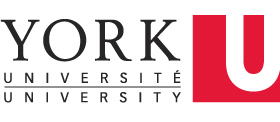Translated script for talk with the director on film "Itaewon"
Translated by Laam Hae (York University) and Yewon Lee (George Washington University)
Itaewon is a documentary of three women engaged in work connected to the sex industry catering to the U.S. military base. I want to talk a little bit about how Korean society sees Itaewon before delving further into the movie itself.
US camptowns in Korea used to generate a sizable economy via the entertainment shows offered to the US military. The money raised exceeded the total export industry of Korea in the mid-1950s. The sex industry catering to U.S. military flourished, which was tied to Itaewon becoming a popular entertainment destination for American GIs into the 1990s. However, after 9/11 incident in 2001, the US government designated these clubs as “off-limits” to GIs to protect them from terrorism. Also, with the closing of Yongsan military base (which was served by Itaewon businesses), Itaewon military-related industry experienced a decline. In a way, Itaewon has risen with the military presence and has declined with their exit.
On the other hand, Itaewon has emerged as a place of new leisure for Koreans. Itaewon’s proximity to the military camptown brought in diverse culture to the scene. For example, old music clubs that contributed to the development of Korean pop music, bars for sexual minorities, and exotic restaurants near the Islam temple in Itaewon, and later workshops set up by artist in the neighborhood. Itaewon has come to represent a space of diversity and liberation. This “globalness” of Itaewon has been attractive to the new capital (e.g. the real estate capital). In the face of capital that is pouring into the area, the old timers have been forced to seek new life strategies. Itaewon is changing fast by those who make profits from the “image” of Itaewon and those who consume that “image.”
In 2014, the production crew of “Itaewon” met three women at the so-called “hooker hill” that has seen its peak days during the time that the U.S. dollar ruled Itaewon. These women worked in the military-related entertainment/service industry since the 1970s. Naki still cannot escape the “hooker hill” area although it is increasingly difficult to make a living. Samsook who runs a bar catering to the U.S. military for 40 years still cannot forget its glory days and watch the changes of Itaewon. Youngwha left hooker hill but still remains in Itaewon. The lives of these women and the changes in Itaewon are intertwined. However, we know little of this story. Itaewon that prospered on the sex industry connected to the U.S. military was for a long time a place that is unfamiliar, dirty, and even frightening to Koreans. Women living in Itaewon have been stigmatized themselves.
During the film production, Itaewon was waiting for the launching of a large-scale redevelopment project. Gentrification has struck the area. although currently the neighborhood businesses are struggling with the COVID lockdown. In a way, Itaewon was witnessing the end of the “era of stigmatization” and its transformation into a new urban residential space. I was curious how the women who remained in Itaewon were making sense of this new era of “development.” The stigmatization of the women does not easily go away. It is unlikely that they are welcomed into the new residential spaces. Their resilient presence in Itaewon is forgotten. The production crew attempted to capture the lives of the women who are forgotten and whose lives were unrecorded. Also, we wanted the film to raise a question about what the place, Itaewon, signifies within the Korean society. Through this process, we hoped to organically reveal the lives of the women who have been othered and buried within the rapacious capitalism of Korea.
Further contexts and backgrounds of the film
In my previous work “My Father’s House,” I examined the relationship between a space and the lives of those who occupy that space. A “development” of a space critically changes the lives of the people in it. In Korea, “development” has taken place with the assistance of the coercive state to build the foundation for private capital to accumulate profits. Individuals either have to modify their life plans and desires to fit themselves into this development frenzy, or simply are knocked out. This is not a free choice. It is a “coerced choice,” because it depends upon the resources one possesses. The red district in front of Yongsan station has vanished with the building of mixed residential and commercial buildings that replaced it. Without even a chance for us to mourn the stigmatized spaces, these stigmatized spaces are disappearing from our memories and histories. This made me contemplate on the question of what should be remembered and how, if Itaewon’s Hooker Hill is going to disappear. There is a large gap between Itaewon I consumed as an entertainment spot and Itaewon I encountered as a documentary director. Situated in this gap is the emotion of fear. Through this film, I resisted the covering up and erasure of the image of stigmatization and fear through capital power. Instead, I wanted us to question what to remember and how, and start the process of finding an answer to these questions.
About your meetings with Samsook, Naki, and Youngwha
I met Naki and Eunghwa through the help of local support group. Then, Naki introduced Samsook to me as a woman like a brave man. As I was interested in the transformation of spaces and the lives of women who are invisible, in them, I wanted to document these women’s stories. I wanted to contact other women who were currently working in clubs, via outreach, but it was not easy to contact them. So, eventually the documentary became a story about these three women. Initially, I wanted to focus on the pains that these women went through as women of a camptown, but as I spent more time with these women, different aspects of their lives and their identities caught my attention. I wanted to show different identities of these women, for example, these women as a neighbor, not just as a woman that used to be in the Camptown entertainment businesses.
Each of these three women had different characters, and their perspectives to the life in general were also quite different. I had to interact with them carefully, as they lived the lives that I don’t know very well. I made efforts a lot to create a rapport with them, and visited them on a regular basis, so that they feel comfortable to be with me and with the camera, so that their everyday mundane lives can be captured by the camera. In fact, those women who used to live or are living in the Camptown, have different perspectives, according to their positionalities and experiences. It was the most difficult task for me to interpret the context of their thoughts.
About unexpected scenes, figures and moments?
The scene of disinfection truck at the beginning of the film was taped during the MERS outbreak in Korea (in 2015). I regularly filmed the spot where the disinfection truck was featured, but when the truck passed by at that place one day, I felt it signified something. In particular, it felt quite strong to me when Naki leapt out and walked away.
Also, Samsook’s video at the opening scene of the film was taped by herself. She handed the video tape to me, noting that it’s a video of her will. Samsook was always an energetic and brave woman to me, so that scene was somewhat strange to me. I felt the scene sort of summarizes what her life has been.
In the case of Youngwha, she mostly stayed at home whenever we filmed her, but once she was out in the neighborhood, but she was well-connected in the neighborhood. It was by luck that I captured the scene where Youngwha was talking to her neighbors about the sale of the Polly Kettle building. I thought the scene showed well Youngwha’s character, and her interest as a resident of the area.
Naki’s scene of leeks was also filmed by luck. The TV was on at that time in Naki’s room, and I felt that the story of the soap opera played on TV at that time captured some aspects of Naki’s life. I felt it ironic.
Samsook mostly distanced herself from other characters in the film, but later I understood why, after I learned about her context.
About the differences between “Itaewon” and “Us, Day by Day”
[translator’s note: “Us, Day by Day” one of the director’s previous films, was screened in Toronto last year]. I myself narrated the film, “Us, Day by Day”, because it was a story of myself and my friends. In the case of “Itaewon”, I wanted to observe the three women’s life. Actually, I was a stranger to them, so I thought me remaining as an observer (rather than a narrator) would be better. But, occasionally, the voices of myself and the film crew are heard in the film. I wanted to have the audience observe various interactions between the women interviewed and the interviewers, and in particular, the ways in which the film crew reacted to the interviews being conducted.
Your new projects?
Currently, I am working on a scenario of a dram film, and an omnibus project entitled “After #MeToo.”




